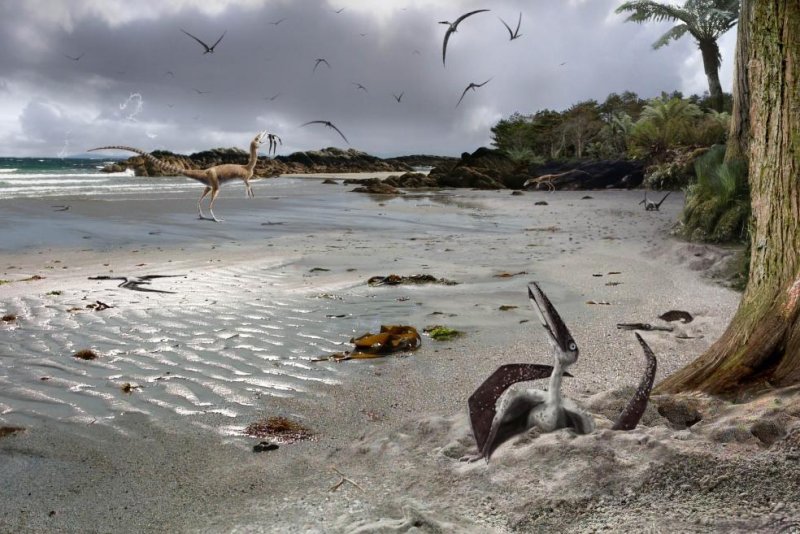New research suggests pterodactyls were born ready to fly. Photo by James Brown/University of Leicester
June 12 (UPI) -- Pterodactyls, the flying reptiles that screeched across the Jurassic skies millions of years ago, were born ready to take to the skies immediately -- a characteristic unmatched in evolutionary history.
According to a new study published in the journal Proceedings of the Royal Society B: Biological Sciences, pterodactyls were physiologically mature by the time they cracked through their eggshells.
Scientists previously estimated newborn pterodactyls emerged not fully developed and unable to fly. The estimation was based on the discovery of fossilized pterodactyl embryos in China. The tiny reptiles had poorly developed wings.
For the new study, researchers compared the development of the embryos with prenatal growth rates in birds and crocodiles. The analysis proved the pterodactyl embryos were a ways away from hatching.
Scientists also recently found more advanced embryos in China and Argentina. The pterodactyls perished just before they were ready to hatch, and their development suggests the pterodactyls were already prepared to fly.
"Theoretically, what pterosaurs did, growing and flying, is impossible, but they didn't know this, so they did it anyway," David Unwin, a paleobiologist and pterodactyl expert at the University of Leicester, said in a news release.
According to researchers, the ability to fly was essential to a baby pterodactyl's survival. Pterodactyl parenting was apparently very hands-off. Newborns had to fend for themselves and catch their own prey. Though essential, flying was dangerous. The fossil record suggests unsupervised flying proved fatal for many young pterodactyls.
The ability to fly and grow may have allowed pterodactyls to develop their massive wingspans, and scientists hope to explore the pterosaurs' unusual development strategies further in future comparative studies.
"Our technique shows that pterosaurs were different from birds and bats and so comparative anatomy can reveal novel developmental modes in extinct species," said Charles Deeming, a University of Lincoln zoologist.















